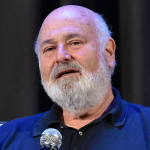As the Conservative party wrestled with its future direction towards the end of the 1970s, Margaret Thatcher’s think tank, the Centre for Policy Studies, published a pamphlet of speeches by its co-founder, Keith Joseph.
The centre had been created “to change the climate of opinion” in British politics, and the collection of speeches, which came out on October 27 1976, sought to explain what needed to change for the Conservatives to win power again.
In it, not only Conservative election failure but also British national decline were attributed to the party’s quest for the middle ground in politics. Joseph wrote of “a compromise between politicians, unrelated to the aspirations of the people”.
This had led to an economic crisis, “a left-wing ratchet” and “the drift towards state socialism and centralisation”. Salvation for both party and country would be found by occupying the “common ground with the people and their aspirations”.
Ever since Thatcher, Conservative leaders have confronted a central political and ideological dilemma: whether to fight elections from the social democratic centre ground of fiscal expansion or the Thatcherite, centre-right “common ground” of fiscal conservatism.
Exactly 45 years to the day since the publication of Joseph’s speeches, the government of Boris Johnson unveiled a budget and spending review that suggested he has chosen the centre ground. But the degree to which the Conservative party is today rooted in the common ground suggests maintaining this position will be far from easy.
The “sea-change in Britain’s political economy” attempted during eleven years of Thatcher government duly witnessed fiscal conservatism. Public spending shrunk from 41% of GDP in 1979-80 to 34.7% in 1989-90.
By 2006, new party leader David Cameron was seeking to define modern, compassionate conservatism. Thanks to the “Thatcher revolution”, he posited, the Conservatives had won the battle of ideas in British politics. The common ground had become the new centre ground.
The proof of that ideological victory was none other than Tony Blair, who had moved his party from the left to the centre and won an election as a result. But, Cameron highlighted, this left the Conservatives moving to the right and allowed Blair to redefine the common ground as “social justice and economic efficiency”.
Therefore, the Conservatives must change to win. They had to fight for the centre ground or risk “irrelevance, defeat and failure”.
Cameron’s ‘new culture of thrift’
Consequently, Cameron initially signed up to New Labour’s fiscal plans for public spending and borrowing. However, when the onset of the 2007-8 financial crisis drove the United Kingdom economy into recession, Cameron abandoned his shadowing of Labour’s fiscal plans.
Cameron told his party “the age of irresponsibility is giving way to the age of austerity”. He argued that a complete change of direction was needed.
This would entail a return to fiscal conservatism – “delivering more with less” – and “a new culture of thrift in government”. The goal was a fiscal tightening equivalent to 6.3% of GDP by 2014-15 to eliminate the budget “deficit” inherited from Labour.
But this was never achieved. Instead, the Conservative/Liberal Democrat coalition’s “unavoidable deficit reduction plan”, which was meant to last for a single parliamentary term, evolved into a “long-term economic plan”.
The coalition’s age of austerity was prolonged by the government of Theresa May so that, in the end, it lasted a decade. She aimed to deliver a total fiscal consolidation of 8.8% of GDP by 2018-19, 82% of which was achieved by cuts in public spending.
Cameron’s fiscal conservatism achieved the first Conservative majority in 23 years when he won the 2015 election. At the time 84% of Conservatives and 46% of voters overall had agreed that austerity had to continue.
But, barely two years later, May lost that majority on an election manifesto which included continued fiscal conservatism. Conservative pollster Michael Ashcroft subsequently found that only half of Conservatives and a quarter of voters overall had agreed with austerity.
What’s more, around one quarter of voters (including about one in three Conservative voters) suggested cuts in spending were no longer needed. And a quarter of voters (including half of total Labour voters) had stated neither austerity nor public spending cuts had ever really been needed and had simply been a rationale for cutting public services.
Johnson’s ‘age of optimism’
The autumn 2021 budget has highlighted that the current prime minister is acutely aware of the electoral dangers of fiscal conservatism for a government which has promised to “build back better” and “level-up” the country. Although it was delivered by instinctive Thatcherite and fiscal conservative Chancellor Rishi Sunak, the budget was replete with Johnsonian boosterism. It set out how this government would deliver “an economy fit for a new age of optimism”.
Sunak’s preference would be for further fiscal retrenchment. But that is hard to reconcile with optimism of any kind – especially since Mark Carney, the former governor of the Bank of England, famously described the last age of austerity as “the first lost decade since the 1860s”.
Moving away, at least in fiscal policy terms, from the ideological common ground will mean embracing a public spending profile more redolent of the New Labour years. It will also mean a taxation profile more reminiscent of the 1950s one nation conservatism so despised by Thatcherites.
The Office for Budget Responsibility says the tax burden will have to be raised from its pre-pandemic level of 33.5% of GDP to 36.2% of GDP in 2026-27 – its highest level since the 1950s. There will also need to be discretionary increases in public spending from 39.8% of GDP prior to the pandemic to 41.6% of GDP in 2026-27. This, the OBR notes, would be “the largest sustained share of GDP since the late 1970s”, the very era which gave birth to Thatcherism’s quest to roll back the frontiers of the state.
Meanwhile, the recent track record of Conservative MPs has been one of repeated overt dissent and rebellion. It was notable that budget week began with a distinctive photo call for party favourite Foreign Secretary Liz Truss – an arch Thatcherite and rival to Sunak for the Johnson succession.
She was dressed in military garb on the deck of HMS Queen Elizabeth, evidently trying hard to replicate the iconic cold war image of Thatcher riding in a British army tank on a NATO tank range in West Germany.
One wonders how long it will be before the torchbearers for Thatcherism in the cabinet and among Conservative MPs will break cover to demand a return to the common ground and their one true faith – or else a change in leadership.
Simon Lee ne travaille pas, ne conseille pas, ne possède pas de parts, ne reçoit pas de fonds d'une organisation qui pourrait tirer profit de cet article, et n'a déclaré aucune autre affiliation que son organisme de recherche.










